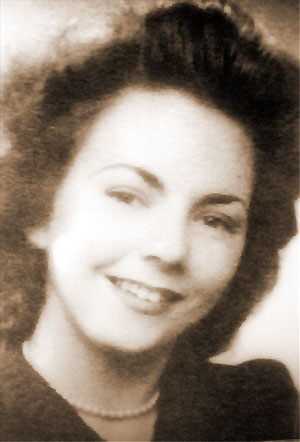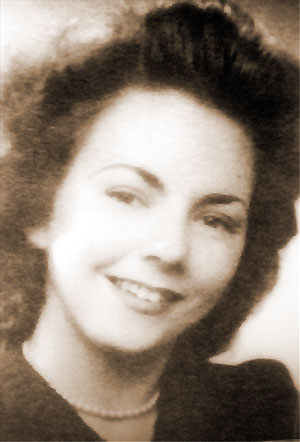
Bulletin #51 - Sep 2012
Churchill’s Driver: Irene Constance Kaye WAAF (1923-2012)

September 7, 2012
Family is seeking anyone who knew Churchill’s driver Irene Kaye.
By Lesley Lewis
 Irene Constance KayeMy mother, Irene Constance Kaye (1923-2012), and her sister Eileen, were daughters of a Scarborough barrister who made valuable contributions to the war effort—though on most of their war work they remained silent to the end. This was typical of so many people who served—they never wanted to make much of their contributions. I have only a few memories that they shared.
Irene Constance KayeMy mother, Irene Constance Kaye (1923-2012), and her sister Eileen, were daughters of a Scarborough barrister who made valuable contributions to the war effort—though on most of their war work they remained silent to the end. This was typical of so many people who served—they never wanted to make much of their contributions. I have only a few memories that they shared.
Eileen was a radio operator who spoke rarely about the war, but she did mention “talking” aircrews back home over the English Channel after bombing raids. Constance found herself in a unique circumstance. For a time she served as Prime Minister Winston Churchill’s second RAF driver. She was the WAAF corporal who drove him, often wearing his “boiler suit,” from London to the Air Ministry or airfields like Biggin Hill, usually in the evening through blacked-out streets, navigating by the dim light of blinkered headlamps.

2025 International Churchill Conference
Constance was a rather reserved girl with a quiet smile, but from the few things she related, she often had a laugh with the great man on longish late night drives when he was feeling expansive and chatty.
She once “stood him up” by arriving late after lingering too long at a “Frankie Concert” while he waited at Whitehall. This was usually not a good idea with Churchill! But when she apologized, explaining that she’d lost track of time listening to Sinatra, he gave a huge laugh and forgave her. It was one of her favourite memories, one of the few she would recount in detail.
Having been Churchill’s driver was her most precious memory. She utterly revered him throughout her life, and was proud of occasions when she experienced firsthand his quick wit and sharp intelligence. Occasionally she spoke of long drives in the Blackout, the PM napping to catch up on lengthy periods without sleep. Sometimes those drives took them out of London, and she once recalled her embarrassment when she suggested a “loo stop” near a field. The PM laughed and said he’d be happy too “stretch my legs for a few minutes too.” After she had driven him a few times they were relaxed, and chatted about “life in general.”
Corporal Kaye did a lot of night driving, on occasion with General Montgomery or Air Vice-Marshal Sholto Douglas as well as Churchill. When she wasn’t driving VIPs she was transporting pilots to Biggin Hill in Humber transport trucks. One night near Northwood, northeast London, her lorry had a puncture and required a tyre change in pitch dark. She was very slim and slight, and apparently after a few minutes of hooting with laughter at her efforts, some of the boys clambered down and helped her.
Many poignant friendships were made in those years. Constance had a friend named Vivienne (I think), also a barrister’s daughter, who flew over France. The last time they met, Vivienne gave her a pair of earrings and asked her to “look after them and wear them.” No more was said. Later Constance learned that Vivienne had never returned. One of her best WAAF friends was Winnie Ord, who lived in Southend-on-Sea, whom I had the pleasure of visiting in the late 1970s. She died some years ago, but she and Mum had kept up a correspondence across the years.
Mum was caught in a few air raids in London during the Blitz and had a permanent horror of underground railway stations—and an enduring penchant for leaving every possible window open—house and car. She had some hair-raising experiences. She once helped WAAF friend, Mary, get her mother out of her flat near the Tower of London during an intense raid at the beginning of the Blitz.
Constance met my father, Leslie William Offley, a serviceman and Londoner who sang and played the double bass. Against the advice of her WAAF friends and family, who told her that he was a “ladies man” (and he was), she married Leslie after the war. I was born in 1954, and we emigrated to Australia in 1956.
Perhaps within the reaches of Finest Hour or Chartwell Bulletin there will be someone who remembers Constance Kaye.
Lesley Lewis, who lives in Australia, seeks anyone who knew her mother. She may be contacted by email on [email protected].
Subscribe
WANT MORE?
Get the Churchill Bulletin delivered to your inbox once a month.





